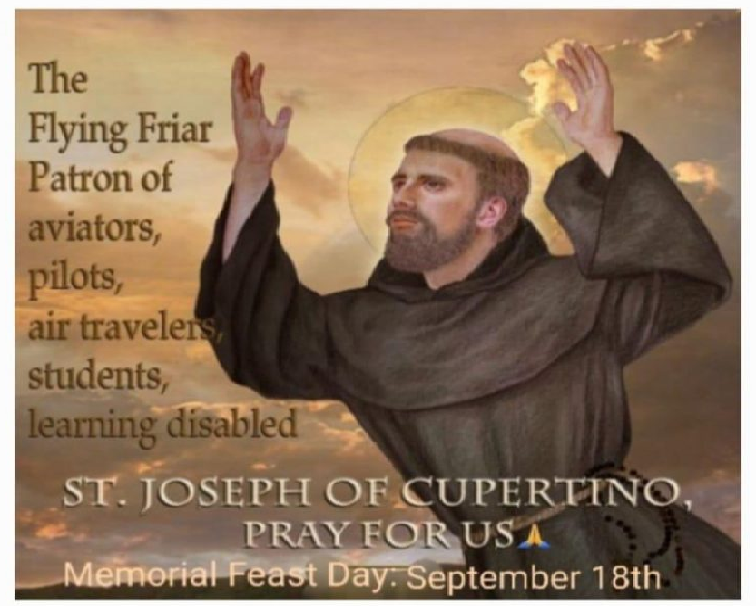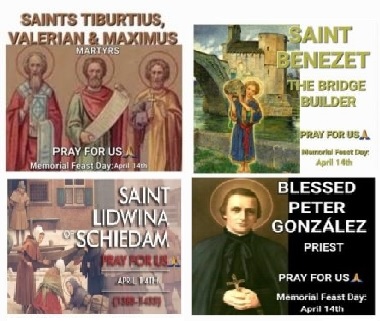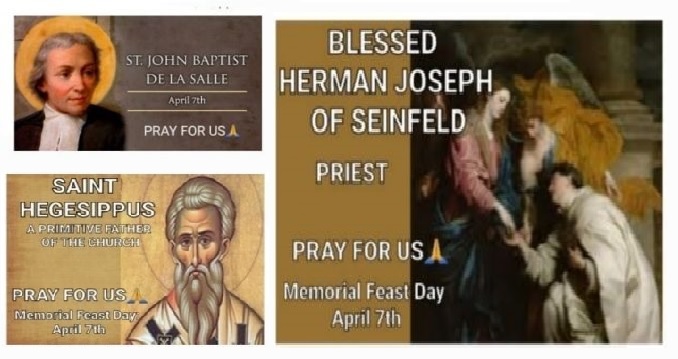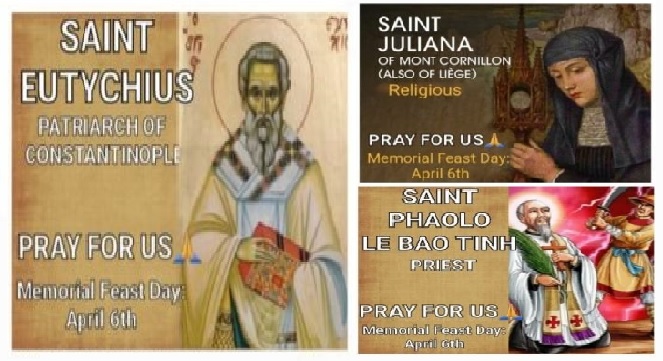
SAINT OF THE DAY ~ FEAST DAY: SEPTEMBER 18TH
MEMORIAL OF SAINT JOSEPH OF CUPERTINO, PRIEST ~ FEAST DAY: SEPTEMBER 18TH: Today, we celebrate the Memorial of Saint Joseph of Cupertino, Priest. Through the intercession...

MEMORIAL OF SAINT JOSEPH OF CUPERTINO, PRIEST ~ FEAST DAY: SEPTEMBER 18TH: Today, we celebrate the Memorial of Saint Joseph of Cupertino, Priest. Through the intercession...
MEMORIAL OF THE FIRST HOLY MARTYRS OF THE HOLY ROMAN CHURCH AND BLESSED GENNARO SARNELLI, PRIEST ~ FEAST DAY: JUNE 30TH Today, we celebrate the Memorial of...
SAINT BERNARDINE OF SIENA, PRIEST, FEAST DAY ~ MAY 20TH: Today we celebrate the Memorial of Saint Bernardine of Siena. Through the intercession of our Blessed Mother...

MEMORIAL OF SAINTS TIBURTIUS, VALERIAN AND MAXIMUS, MARTYRS; SAINT BENEZET; SAINT LIDWINA OF SCHIEDAM, VIRGIN AND BLESSED PETER GONZÁLEZ, PRIEST: Today, on this third Sunday of...

MEMORIAL OF SAINT JOHN BAPTIST DE LA SALLE, PRIEST; SAINT HEGESIPPUS, A PRIMITIVE FATHER OF THE CHURCH AND BLESSED HERMAN JOSEPH OF SEINFELD, PRIEST – FEAST...

MEMORIAL OF SAINTS EUTYCHIUS, PATRIARCH OF CONSTANTINOPLE; SAINT JULIANA OF MOUNT CORNILLON, RELIGIOUS AND SAINT PHAOLO LE BAO TINH, PRIEST – FEAST DAY: As we continue...